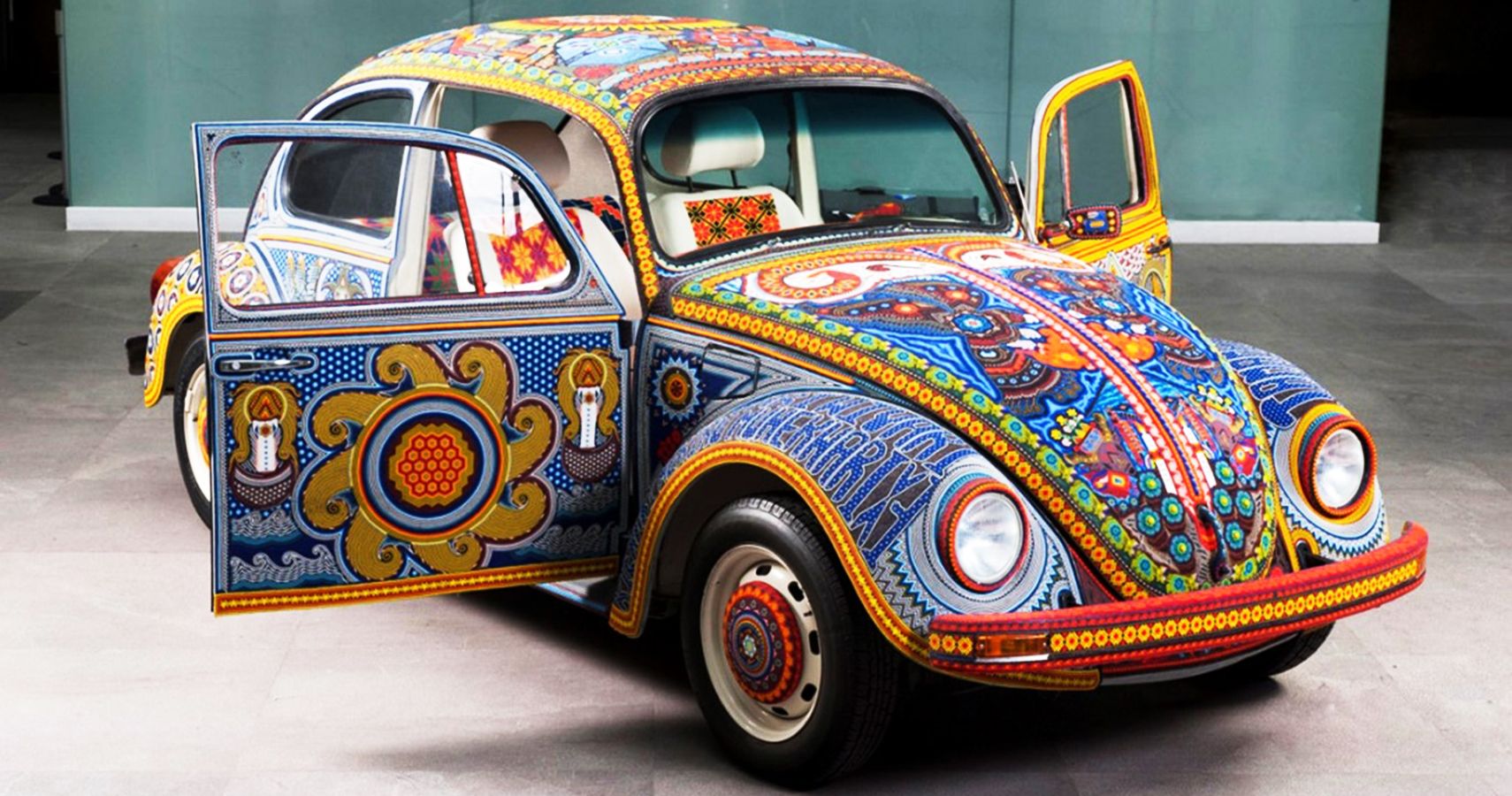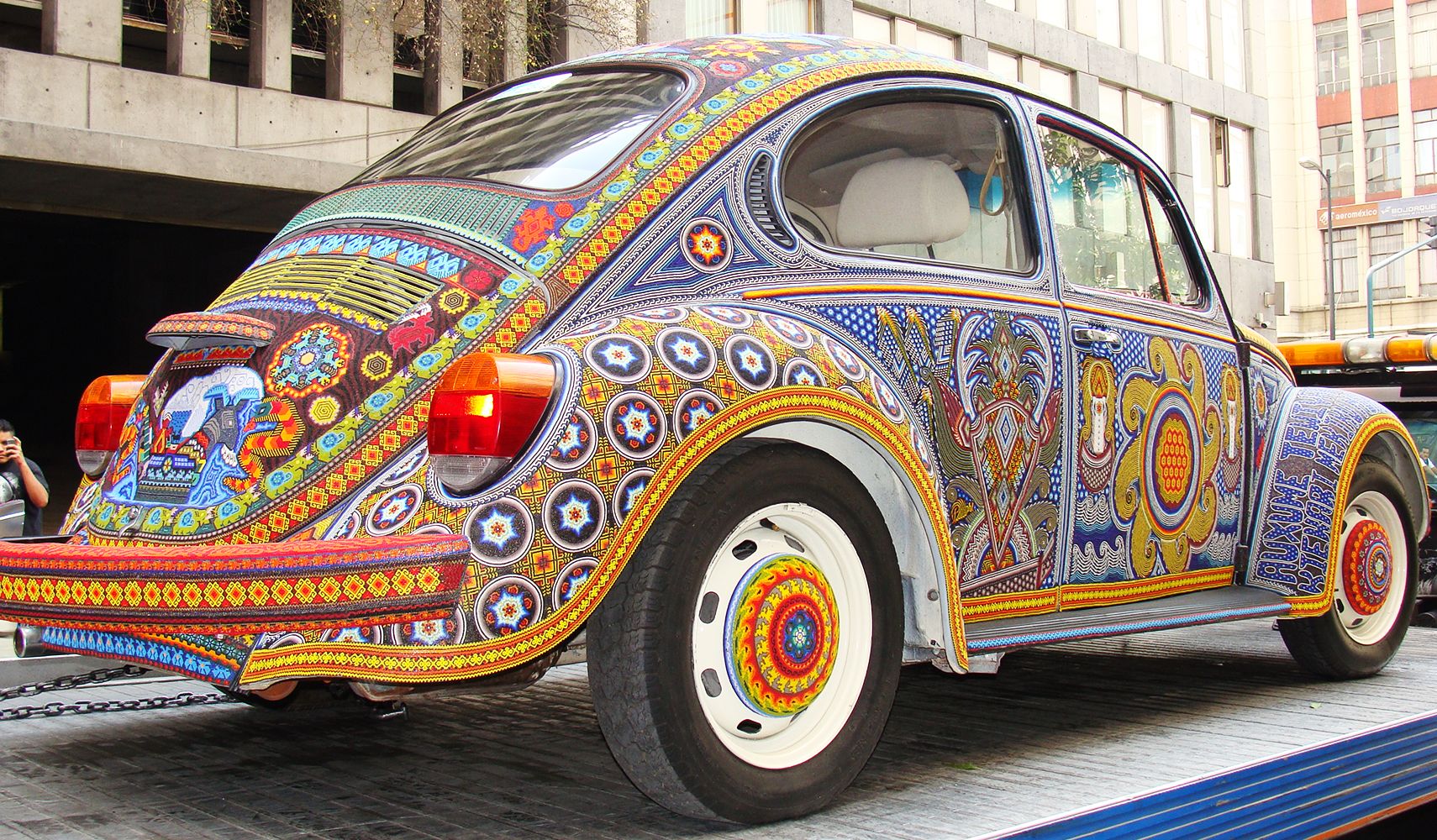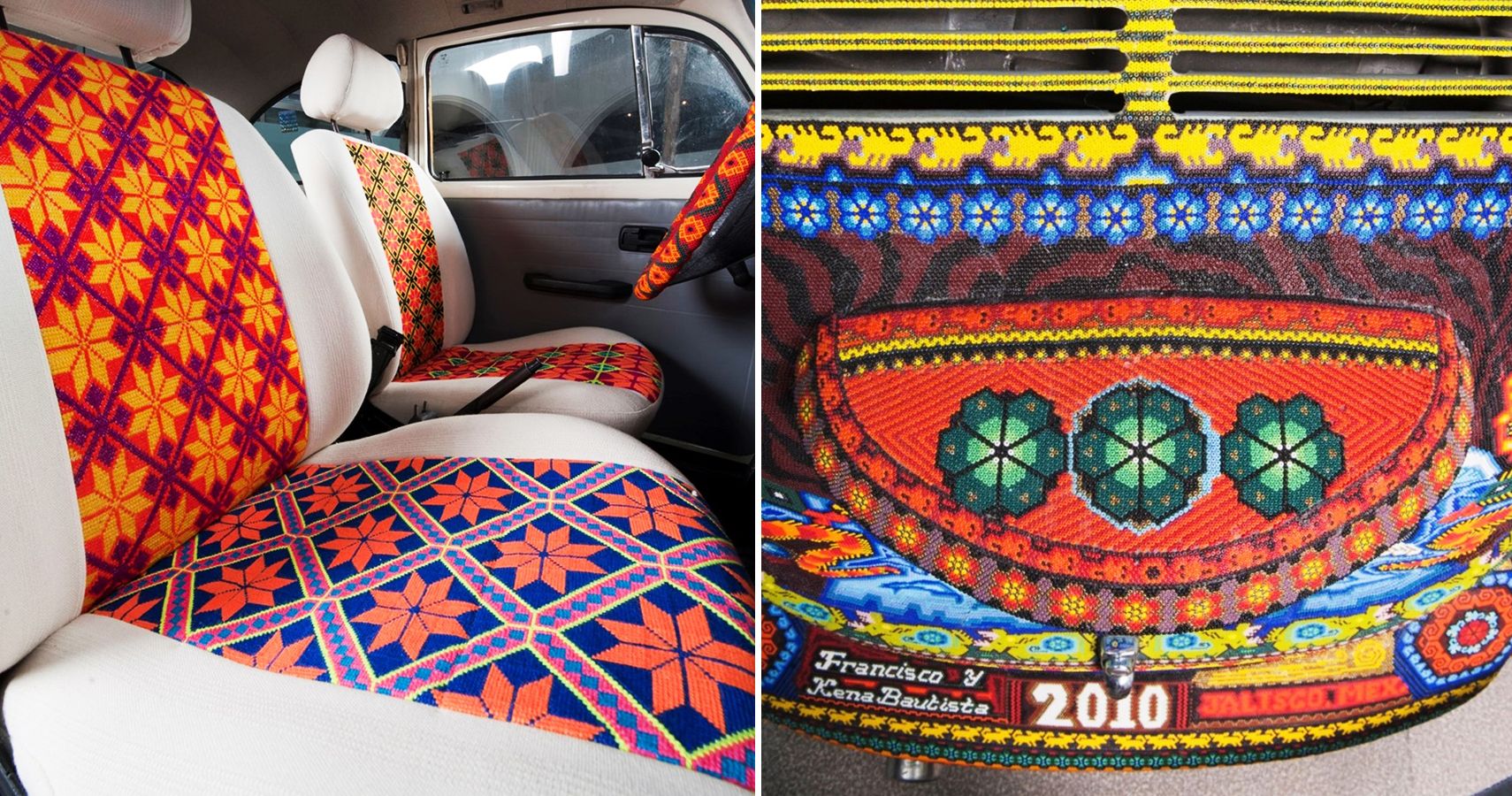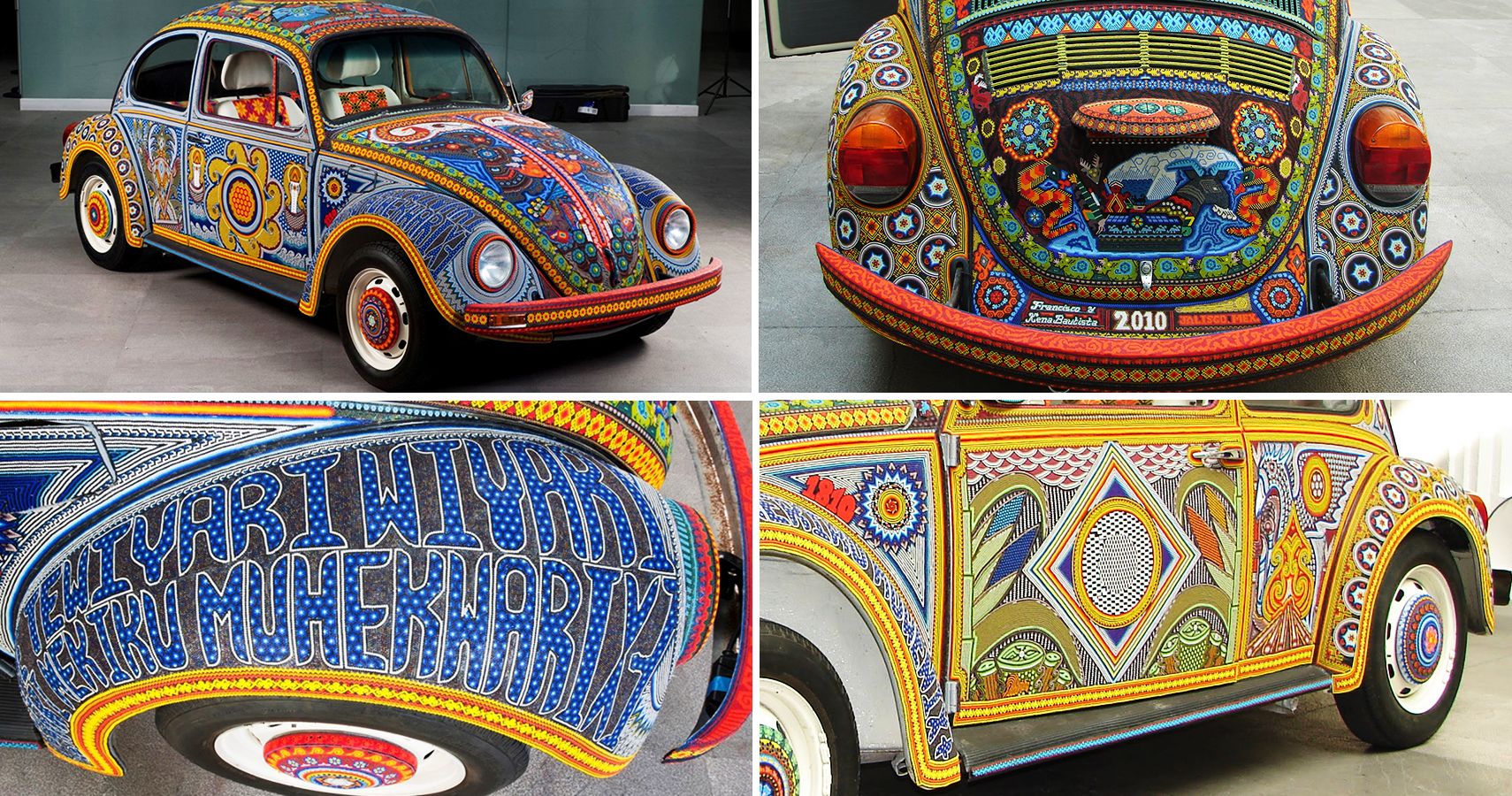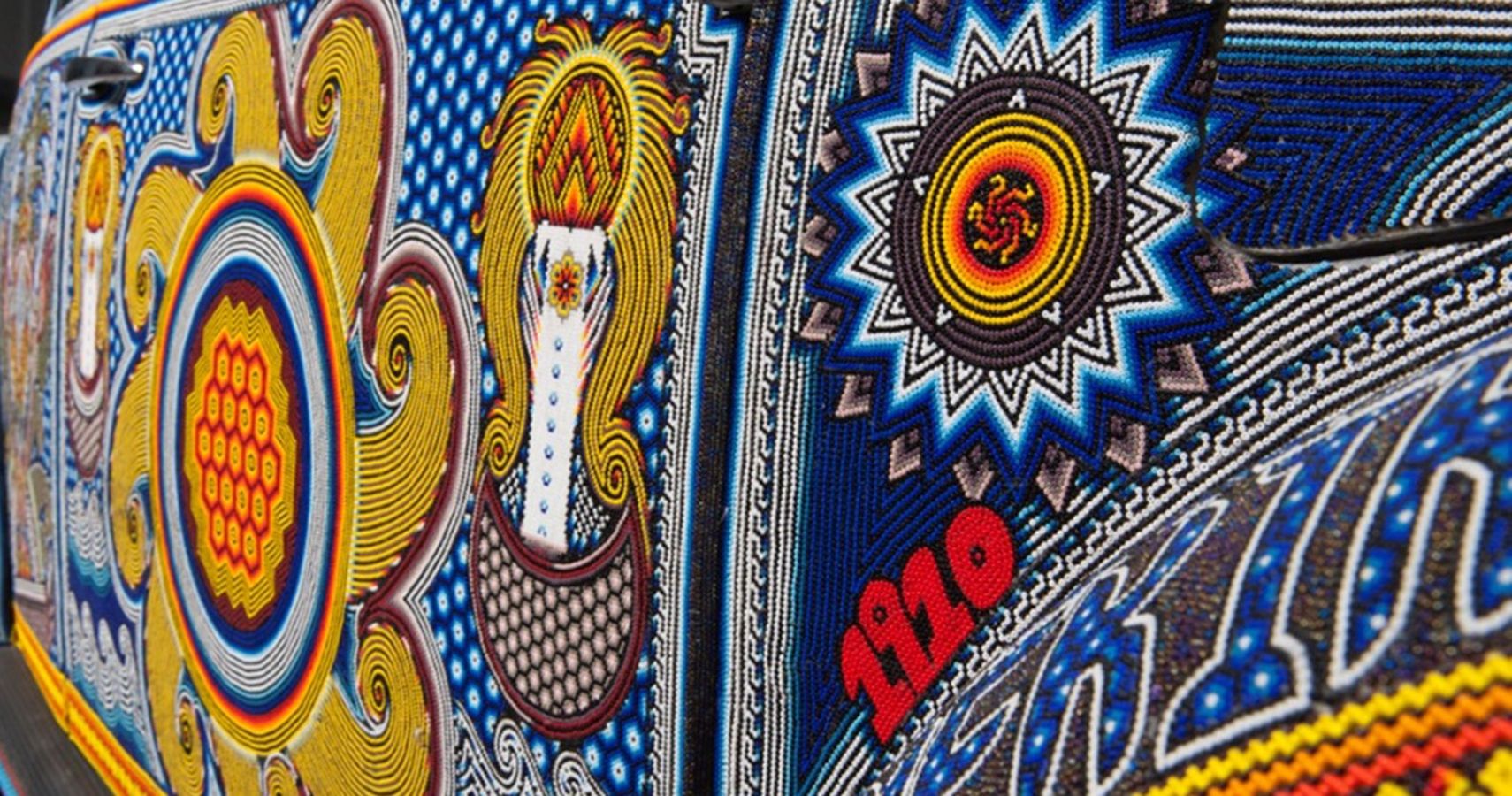It has been more than a year since the Volkswagen ended the production of the Beetle at its Puebla site in Mexico. Since then, we've been wondering if VW will ever bring the Beetle back to life. After all, it's a classic car icon as well as a medium of expression. A certain 1990 Volkswagen Beetle in Mexico proved this when it was transformed into the artistic Vochol.
Vocho Plus Huichol Equals Vochol
Vochol actually combines “vocho,” a term referring to the Beetle, and “Huichol,” a moniker for the indigenous group Wixárika living in Nayarit and Jalisco, Mexico. Through centuries, local Huichol managed to preserve their pre-Columbian traditions -- including their beadwork – thanks to the Sierra Madre mountains.
While Huichol people originally used natural beads (seeds and shells) for their artwork, their contemporary artists now employ glass or plastic beads for their decorative projects.
Vochol Project: Covering A Beetle With Beads
In 2010, public and private organizations tapped eight artists from two Huichol families to create the Vochol -- a Beetle completely covered with ornate Huichol beading. The project would demonstrate the traditions of Mexico’s indigenous communities through an artwork created using their techniques.
The eight-artist team completed the Vochol in eight months, adorning anything that wasn't glass, plastic or rubber, with colorful glass beads. The team first covered the car with resins and then applied the beads in patterns that pay tribute to Huichol culture.
Laden With Huichol Symbols
These patterns include symbols such as the two snakes on Vochol's hood, representing rain. The Beetle's sides have patterns depicting symbols in Huichol spirituality, such as a deer, birds, scorpions, and peyote flowers. The rear features an image of a shaman steering a canoe.
RELATED: 10 Most Iconic Volkswagen Beetle Models Of All Time
Meanwhile, Vochol's roof is marked by a sun symbolizing the union between humans and gods, as well as four two-headed eagles offering protection to passengers. Phrases like “200 years of Independence” and “100 years since the Mexican Revolution” – both in Wixárika language – adorned Vochol's fenders.
Over 2 Million Beads And 9,000 Hours Of Work
Huichol artists laid out around 2,277,000 beads over the course of 9,000 hours. There is no word on what all those beads weigh. Obviously that wasn't a concern to the artists but inquiring gearhead minds want to know.
Once completed, Vochol was unveiled at a museum in Guadalajara, Mexico. It's been doing tours abroad, but when not, it's safely kept at the Museo de Arte Popular in Mexico City.
Source: Volkswagen

